The Best NFT Collection That Is A Hit Among Collectors In 2023

Non-Fungible Tokens (NFTs) are digital assets that represent ownership or proof of authenticity of a unique item or piece of content using blockchain technology. Unlike cryptocurrencies such as Bitcoin or Ethereum, which are fungible and can be exchanged on a one-to-one basis, NFTs are indivisible and unique. Each NFT has a distinct value and can’t be exchanged on a like-for-like basis.
NFTs utilize blockchain, a decentralized and distributed digital ledger, to provide a transparent and secure record of ownership and transaction history. Blockchain technology ensures that the ownership and authenticity of the NFT can be verified and tracked, preventing fraudulent duplication or unauthorized modifications.
One of the primary use cases for NFTs is within the realm of digital art. Artists can create unique digital artworks and issue them as NFTs, allowing collectors to purchase and own the original digital file or tokenized representation of the artwork. The ownership of an NFT grants the buyer exclusive rights to display, distribute, and resell the digital artwork, providing artists with new avenues for monetization and revenue streams.
NFTs have gained significant attention and popularity in the art world due to their ability to solve the long-standing issue of provenance and ownership in the digital space. In traditional digital art, copies can be easily created, making it challenging to establish who the original creator or owner is. With NFTs, the blockchain serves as a public ledger, permanently recording every transaction and ensuring the legitimacy of the ownership chain.
Aside from digital art, NFTs have expanded into various other industries and sectors. They can be used to tokenize and authenticate various forms of digital content, including music, videos, virtual real estate, collectibles, in-game items, virtual goods, and even real-world assets. NFTs enable creators and collectors to establish scarcity, uniqueness, and value for these digital assets, creating new markets and opportunities.
The market for NFTs has experienced explosive growth, with high-profile sales and auctions garnering significant media attention. Some notable examples include digital artist Beeple’s artwork “Everydays: The First 5000 Days” selling for $69 million at auction, Twitter CEO Jack Dorsey’s first tweet being sold as an NFT for $2.9 million, and virtual real estate within virtual worlds being traded for substantial sums of money.
However, the NFT market has also faced criticism and challenges. Detractors point out concerns regarding the environmental impact of blockchain technology, as the energy consumption required for some blockchain networks is substantial. There have also been instances of plagiarism and copyright infringement within the NFT space, where unauthorized copies of digital artworks have been minted and sold without the artist’s consent or knowledge.
Despite the criticisms, NFTs have undeniably captured the attention of artists, collectors, investors, and technology enthusiasts alike. The technology offers new possibilities for creators to monetize their work, establish digital ownership, and engage with their audience. As the ecosystem continues to evolve, it remains to be seen how NFTs will shape the future of art, digital content, and asset ownership.
Importance of NFTs for the Economy
Non-Fungible Tokens (NFTs) have gained importance and are impacting the economy in several ways. Here are some key aspects highlighting their significance:
1. New Revenue Streams: NFTs provide creators with novel opportunities to monetize their digital assets. Artists, musicians, writers, and other content creators can tokenize their work as NFTs and directly sell them to collectors, eliminating intermediaries and gaining greater control over their revenue. This enables artists to tap into a global market and potentially earn royalties from secondary sales as well, generating income even after the initial sale.
2. Empowering Digital Creatives: NFTs empower digital creatives by establishing a mechanism for proving ownership and authenticity in the digital realm. In the past, digital content was often subject to plagiarism and unauthorized duplication, leading to a lack of recognition and compensation for the original creators. NFTs provide a solution by enabling creators to tokenize their work, certifying its authenticity, and establishing a transparent ownership history through the blockchain. This empowers creators to protect their intellectual property and receive recognition and compensation for their contributions.
3. Democratization of Art: The art world has historically been centralized, with a select few institutions and galleries exerting control over what is considered valuable and worthy of recognition. NFTs challenge this paradigm by enabling artists from diverse backgrounds to showcase and sell their work directly to a global audience. This decentralization allows for a more inclusive art economy, where artists have the opportunity to gain visibility, recognition, and financial support, regardless of their geographic location or institutional affiliations.
4. Asset Tokenization: NFTs have the potential to revolutionize the way real-world assets are represented, traded, and invested in. Through tokenization, physical assets such as real estate, collectibles, or intellectual property rights can be transformed into digital assets represented by NFTs. This opens up possibilities for fractional ownership, enabling broader access to investment opportunities that were previously restricted to a limited number of individuals. Additionally, NFTs provide a transparent and immutable record of ownership and transaction history, reducing the need for intermediaries and increasing efficiency in asset transfers.
5. Enhanced Fan Engagement and Community Building: NFTs enable creators to deepen their engagement with fans and build vibrant communities around their work. By minting limited edition NFTs or offering exclusive perks and experiences tied to the ownership of an NFT, creators can establish direct connections with their audience. This fosters a sense of belonging and loyalty within the community, which can extend beyond traditional forms of monetization, such as merchandise sales or ticketing.
6. Secondary Market Opportunities: NFTs offer the potential for creators and investors to benefit from secondary market sales. Unlike traditional art markets, where artists usually do not participate in the financial upside of resales, NFTs can be programmed with smart contracts that automatically grant creators a percentage of the resale value each time the NFT changes hands. This creates a sustainable model where artists continue to receive financial rewards as the value of their work appreciates over time.
7. Innovations in Virtual Worlds and Gaming: NFTs are making a significant impact within virtual worlds and gaming ecosystems. They allow players to own and trade in-game items, virtual land, and other virtual assets securely and transparently. This introduces new possibilities for the gaming industry, including player-driven economies, interoperability between different games, and the ability to truly own digital assets that have real-world value. NFTs can also foster new business models for game developers by enabling the creation and sale of unique and scarce virtual items.
As the NFT ecosystem continues to evolve and mature, its impact on the economy is likely to expand further. From transforming how digital content is created, shared, and monetized, to revolutionizing the representation and trade of real-world assets, NFTs have the potential to reshape various sectors and unlock new economic opportunities.
Also read: 14 Different Ways To Promote Your New NFT Collection
Top 10 Best NFT Collections of 2023
The NFT market is booming, and there are a number of great NFT collections to choose from. If you’re looking to invest in NFTs, here are 10 of the best collections to consider in 2023:
- Bored Ape Yacht Club (BAYC)
BAYC is one of the most popular NFT collections of all time. The collection consists of 10,000 unique apes, each with its own unique traits. BAYC has become a status symbol among crypto enthusiasts, and some of the apes have sold for millions of dollars. 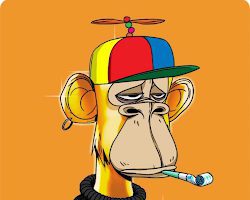
- CryptoPunks
CryptoPunks is another popular NFT collection that was launched in 2017. The collection consists of 10,000 unique punks, each with its own unique traits. CryptoPunks have become some of the most valuable NFTs in the world, with some selling for over $10 million. 
- Mutant Ape Yacht Club (MAYC)
MAYC is a collection of 20,000 mutant apes that were created by the Bored Ape Yacht Club team. MAYC apes are created by “mutating” BAYC apes, and each mutant ape has its own unique traits. MAYC has quickly become one of the most popular NFT collections, and some of the apes have sold for millions of dollars. 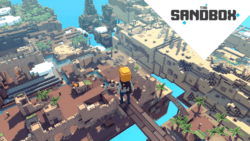
- Azuki
Azuki is a new NFT collection that was launched in January 2022. The collection consists of 10,000 unique azukis, each with its own unique traits. Azukis have quickly become popular among crypto enthusiasts, and some of the azukis have sold for millions of dollars. 
- Clone X – X TAKASHI MURAKAMI
Clone X is an NFT collection created by Takashi Murakami in collaboration with RTFKT. The collection consists of 20,000 unique clones, each with its own unique traits. Clone X is a high-quality NFT collection with a strong artistic vision, and it has quickly become one of the most popular NFT collections. 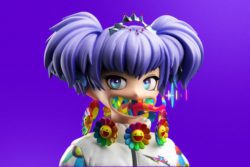
- Moonbirds
Moonbirds is a new NFT collection that was launched in April 2022. The collection consists of 10,000 unique moonbirds, each with its own unique traits. Moonbirds have quickly become popular among crypto enthusiasts, and some of the moonbirds have sold for millions of dollars. 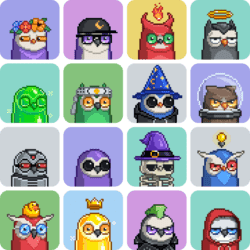
- Women Rise
Women Rise is an NFT collection that was created to celebrate women in the blockchain space. The collection consists of 10,000 unique women, each with its own unique traits. Women Rise is a great collection for anyone who wants to support women in the blockchain space. 
- The Sandbox
The Sandbox is a metaverse platform that allows users to create, build, and monetize their own experiences. The platform has its own NFT collection, which consists of LAND, ASSETS, and AVATARs. The Sandbox NFT collection is a great way to get involved in the metaverse.
- Decentraland
Decentraland is another metaverse platform that allows users to create, build, and monetize their own experiences. The platform has its own NFT collection, which consists of LAND, ASSETS, and AVATARs. The Decentraland NFT collection is a great way to get involved in the metaverse. 
- Art Blocks
Art Blocks is a platform that allows users to create and collect on-chain art. The platform has a variety of different NFT collections, each with its own unique style. Art Blocks is a great way to collect digital art.
These are just a few of the best NFT collections to consider in 2023. With so many great collections to choose from, there’s sure to be one that’s perfect for you.
Keywords: NFT, non-fungible
Also read: All about NFT Collection – Bored Apes Yacht Club (BAYC)
Risks associated with NFTs
While Non-Fungible Tokens (NFTs) offer exciting opportunities, they also come with certain risks and challenges. Here are some key risks associated with NFTs:
1. Lack of Regulation: The NFT market is relatively new and evolving rapidly, with limited regulatory oversight. This lack of regulation opens the door to potential fraud, scams, and market manipulation. Investors and buyers should exercise caution and conduct thorough research before engaging in NFT transactions to mitigate the risk of falling victim to fraudulent schemes or unscrupulous actors.
2. Volatility and Speculative Nature: The value of NFTs can be highly volatile and subject to speculative bubbles. Prices for certain NFTs have experienced rapid increases followed by significant declines, leading to potential financial losses for investors. Speculative buying and selling can distort the true value of NFTs, making it challenging to determine their intrinsic worth. It’s important to approach NFT investments with caution and not solely rely on short-term price fluctuations.
3. Lack of Liquidity: While NFTs have gained popularity, the market for reselling NFTs may not always provide sufficient liquidity. Investors may face challenges finding buyers for their NFTs when they wish to sell, especially for less popular or lower-demand assets. The illiquid nature of certain NFT markets can make it difficult to exit investments quickly or at desired prices.
4. Intellectual Property and Copyright Concerns: NFTs have raised intellectual property and copyright concerns. There have been instances where NFTs have been minted and sold without the consent or proper attribution of the original creator. The ownership of an NFT does not necessarily confer ownership of the underlying intellectual property rights. It is essential to ensure that NFTs are issued by the rightful owner or creator and that all necessary rights and permissions are secured.
5. Environmental Impact: The environmental impact of blockchain technology, particularly in relation to energy consumption, is a significant concern. Some blockchain networks that support NFTs, such as Ethereum, consume substantial amounts of energy, contributing to carbon emissions. The carbon footprint associated with NFT transactions and mining activities has raised criticism about the sustainability of the NFT ecosystem.
6. Counterfeit and Plagiarism Risks: Despite the blockchain’s transparency, there have been cases of counterfeit or plagiarized NFTs. Unauthorized copies of digital artworks or content have been minted and sold, deceiving buyers and infringing upon the original creator’s rights. Buyers must exercise due diligence in verifying the authenticity and provenance of the NFTs they intend to purchase.
7. Technological Risks: NFTs are built on blockchain technology, which is still developing and may be subject to vulnerabilities. Smart contracts, which are often used to govern NFT transactions, can have coding errors or be exploited by malicious actors. This can lead to financial losses, hacks, or the loss of access to NFTs. It is crucial to consider the security of the underlying blockchain infrastructure and conduct proper audits before engaging in NFT transactions.
8. Overvaluation and Bubble Risk: The hype surrounding NFTs has led to instances of overvaluation and potential market bubbles. Buyers should be cautious when evaluating the price and long-term value of NFTs, as unsustainable price levels may not be indicative of their true worth. Understanding the underlying factors driving the demand for specific NFTs and conducting thorough research can help mitigate the risk of overpaying for assets caught in a speculative bubble.
It is essential for participants in the NFT market, including creators, buyers, and investors, to carefully consider and manage these risks. Conducting thorough due diligence, understanding the terms and conditions of NFT transactions, and staying informed about the evolving regulatory landscape can help mitigate potential pitfalls and ensure a safer engagement with NFTs.
Just completed my rainbow set of all 10 @IROIRO_NFT colors! 🥳 Some of the best anime art of any NFT collection. 🤩🎨
Last 4 are the Spring holder drops plus the first #redbull X #IROIRO collab.
Excited about the upcoming Summer holder drops! 😎#nfts #NFTJapan #NFTCommunity pic.twitter.com/g4bWhP81cs
— JustinBouken (@JustinBouken) June 16, 2023
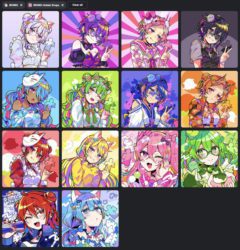
Future of NFTs
The future of Non-Fungible Tokens (NFTs) holds significant potential for further growth, innovation, and integration across various industries. Here are some key aspects that may shape the future of NFTs:
1. Expanded Adoption and Integration: As NFTs become more mainstream, their adoption is likely to expand across industries beyond art and collectibles. NFTs have the potential to transform the way we think about ownership and value in realms such as music, film, literature, virtual reality, sports, and more. The integration of NFTs into existing platforms, marketplaces, and ecosystems can facilitate wider accessibility and engagement.
2. Enhanced Interoperability and Standards: Currently, there are multiple blockchain networks supporting NFTs, resulting in fragmentation and limited interoperability. In the future, efforts to establish common standards and protocols across blockchains may emerge, enabling seamless transfer and interaction of NFTs across different platforms. Such interoperability would facilitate liquidity, increase market efficiency, and provide greater flexibility for creators and users.
3. Improved Scalability and Reduced Environmental Impact: One of the challenges faced by NFTs is the scalability of blockchain networks. As demand increases, scalability solutions, such as layer-two protocols or advancements in blockchain technology, may be developed to handle the growing transaction volume more efficiently. Additionally, there is a rising awareness of the environmental impact of certain blockchain networks, leading to the exploration of more eco-friendly alternatives or the adoption of sustainable practices within the NFT space.
4. Enhanced Utility and Functionality: NFTs are likely to evolve beyond their current role as digital collectibles or assets. The integration of programmable features within NFTs, such as smart contracts and dynamic capabilities, could enable additional functionality. For example, NFTs could be programmed to grant access to exclusive content, unlock special privileges, represent membership in communities, or serve as verifiable proofs of authenticity for physical assets.
5. Fractional Ownership and Tokenization of Real-World Assets: NFTs have the potential to revolutionize the way real-world assets are owned, traded, and invested in. Tokenizing physical assets, such as real estate, artwork, or intellectual property rights, can enable fractional ownership, increased liquidity, and broader access to investment opportunities. This could democratize the ownership of traditionally illiquid assets and facilitate new forms of asset management and financing.
6. Enhanced Fan Engagement and Creator-Follower Relationships: NFTs offer creators and influencers the ability to deepen their relationships with fans and followers. Through the issuance of NFTs, creators can offer unique experiences, limited editions, or personalized content to their most loyal supporters. This fosters a sense of community, strengthens fan engagement, and provides additional revenue streams for creators beyond traditional monetization avenues.
7. Integration with Virtual Worlds and Gaming: NFTs are already making significant inroads into virtual worlds and gaming ecosystems. The integration of NFTs allows players to own, trade, and monetize in-game assets, virtual real estate, or virtual goods. As virtual worlds continue to expand and gain popularity, NFTs can provide a seamless bridge between the virtual and real economies, enabling players to truly own and control their digital assets.
8. Evolving Regulatory Landscape: As the NFT market matures, regulatory frameworks may develop to address concerns related to investor protection, intellectual property rights, consumer rights, and anti-money laundering measures. The establishment of clearer guidelines and regulations can provide a more secure and transparent environment for NFT participants, boosting confidence and wider adoption.
The future of NFT collections holds immense potential, but it is also subject to challenges and uncertainties. The continued growth and development of the NFT ecosystem will rely on addressing these challenges, fostering responsible practices, and exploring innovative use cases that bring value to creators, investors, and users.




























































